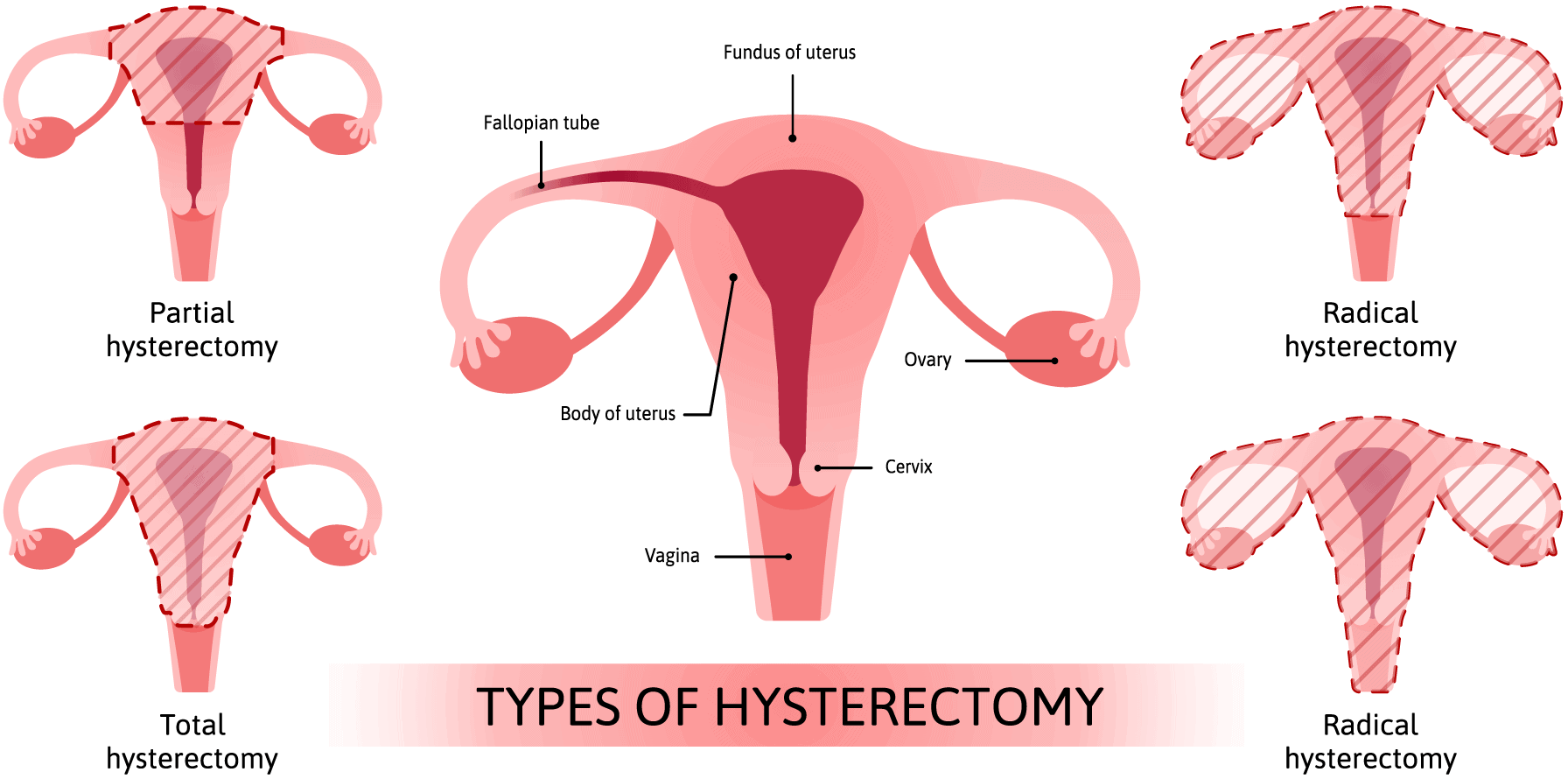Hysterectomy: Rehab Pilates

It takes time to heal post any surgery. But when it is something as major as the removal of an organ, the recovery can be a long-drawn process. One such surgery is hysterectomy. Continuing with our pelvic floor health series, we will be dealing with what are the changes felt post-surgery and how Rehab Pilates can help with overcoming the difficulties.
Hysterectomy
A hysterectomy is the surgical removal of the uterus and most likely, the cervix. It may be done for various reasons including uterine fibroids, uterine prolapse, cancer of the uterus, cervix or ovaries, endometriosis, abnormal vaginal bleeding, chronic pelvic pain, etc. Hysterectomy for noncancerous reasons is usually considered only after all other treatment approaches have been tried without success. Depending on the reason for the surgery, it may involve removing surrounding organs and tissues, such as the fallopian tubes and ovaries.
These organs have various myofascial attachments to the pelvic cavity. As the organs are removed, there is an increase in the pelvic cavity and the tissues are no longer attached to anything. It results in laxity in the pelvic floor and surrounding muscles. Healing might take place with fibrosis and scarring. The scarring can be removed from the abdominal wall laparoscopically. However, the disuse of the ligaments leads to disuse atrophy in the pelvic cavity.
All of this creates an unnecessary tug of war in the pelvic floor and fascia. The disuse atrophy can cause pain and stiffness. We need to maintain mobility in the sacroiliac joint, lower lumbar, hip and other joints surrounding the pelvis.
Case Study
Aparna had a complete hysterectomy in June 2018. She had had fibroids and a thick uterus lining which led to heavy bleeding. In October of the same year, she joined Moushu’s Pilates. On her initial assessment, there were no major complaints except for lack of mobility and strength. Her blood reports indicated a decrease in vitamin D3 levels. She had an exaggerated lumbar lordosis and any loaded arm activity led to a rib flare. These indicated a poor control of the abdominal muscles, predominantly the rectus abdominis and obliques.
Before her surgery, Aparna used to go to the gym regularly and did high-level weight training. Post-surgery, simple ab curls were leading to cramps in her abdomen. She wanted to regain her strength levels through the Pilates program.
We started her off with a 3-month equipment program (check the video below). Training from the basics, we began strengthening her core with ab curls, slowly progressing to the table-top position. The reformer provided a support as well as a challenge through the springs. The feet in straps exercises gave her an assist during abdominal work.
She got hooked onto Pilates and then progressed to Pilates on the mat. Having been with us for almost 4 years, 5 times a week, there isn’t any equipment, prop or class that she hasn’t tried out.
“Not only have I managed to increase my stamina and strength, but I have also gained an understanding of my body: how to concentrate and work different muscles in isolation and together,” says Aparna.
“Moushu and her amazing team have been there to guide me through on my journey to wellness in both mind and body.”
Start your fitness journey with us. Book a session.
